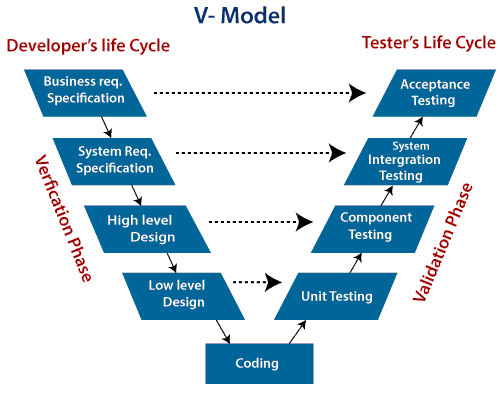Pictures of Models
Validation
Phases
The different validation phases in
the V-Model are explained in details below:-
1.
Unit Testing
Unit tests
designed in the module design phase are executed on the code during this
validation phase. Unit testing is the testing at code level and helps eliminate
bugs at an early stage, though all defects cannot be uncovered by unit testing.
2.
Integration Testing
1. System Testing
System
testing is directly associated with the system design phase. System tests check
the entire system functionality and the communication of the system under
development with external systems. Most of the software and hardware
compatibility issues can be uncovered during this system test execution. It
also tests the functional and non-functional requirements of the developed
application.
2.
User Acceptance Testing (UAT)
UAT is associated with the business
requirement analysis phase and involves testing the product in user environment
that resembles the production environment. UAT verifies that the delivered
system meets user’s requirement and system is ready for use in real world.







Comments
Post a Comment